Of the four species of grebes that frequent Kootenay Lake, the Pied-billed Grebe is the smallest and least often seen. So, when one is spotted, it is worth watching: Will its underwater foraging produce anything of interest?
Thursday’s Pied-billed Grebe made, what to me was, an unexpected find: a crayfish. I did not even realize that Kootenay Lake contained crayfish, and now the grebe was feeding on one—the grebe knew what I did not.
A Pied-billed Grebe was hunting along the shore of Kootenay Lake.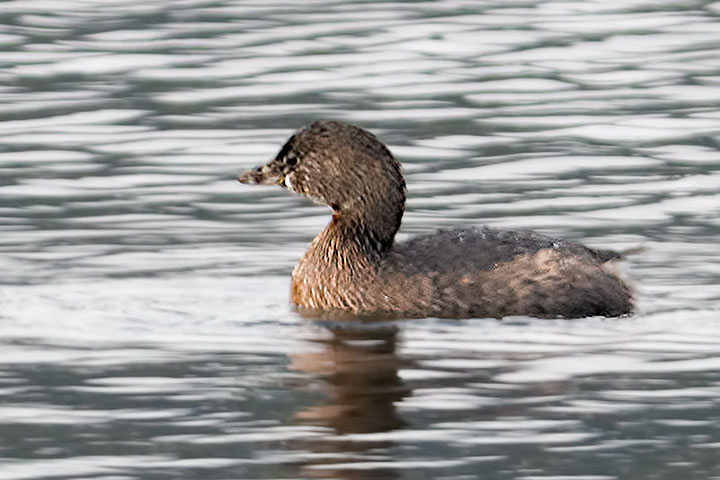
It dived and surfaced with something that, at first, I thought was a fish.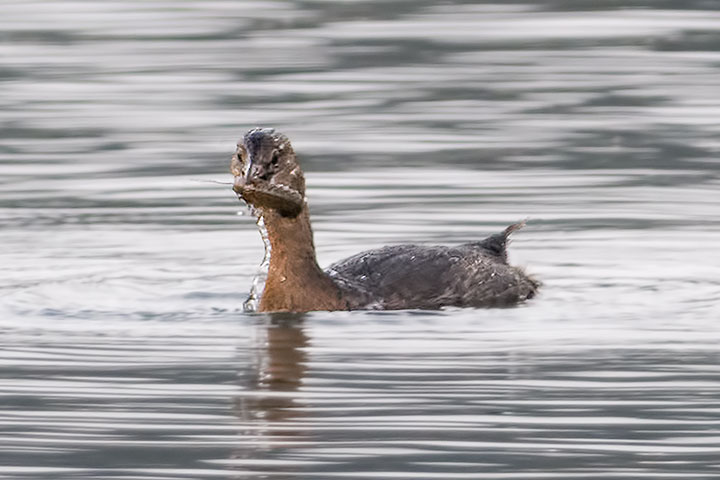
But, those dangling legs didn’t quite fit the profile of a fish.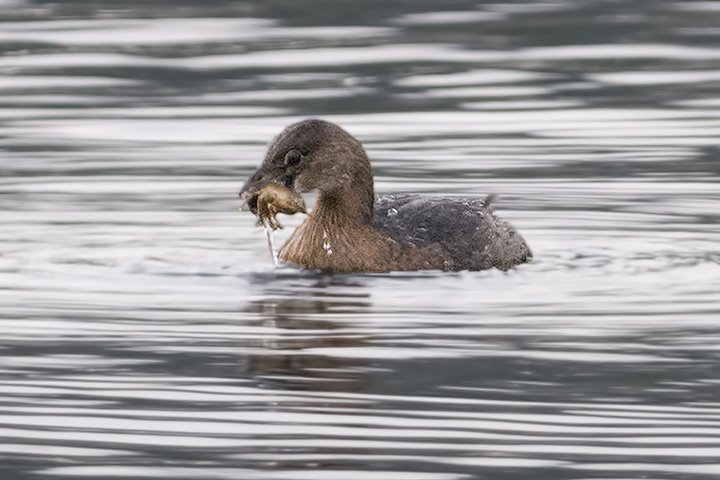
The grebe had captured a crayfish. Is it is a native Signal Crayfish, Pacifastacus leniusculus, or an invasive Rusty Crayfish, Oronectes rusticus? My pictures are probably not good enough to distinguish. However, the grebe did not care. Its main problem was to turn the crayfish from being athwart its bill to aligned with it so as to swallow it.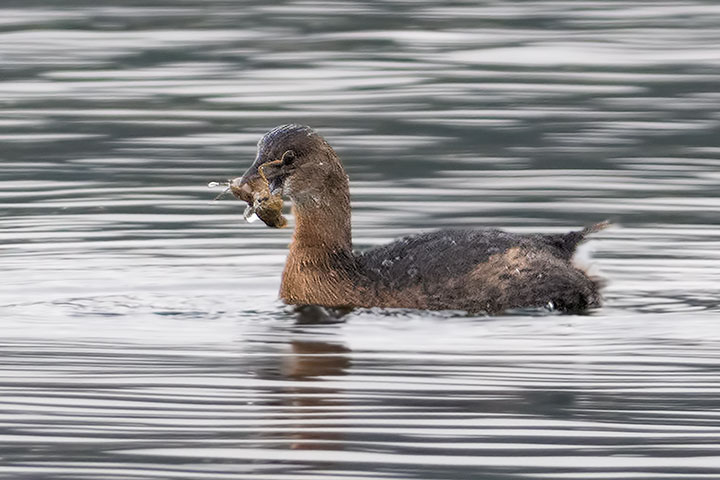
The grebe dropped the crayfish and picked it up again so it was aligned with its bill.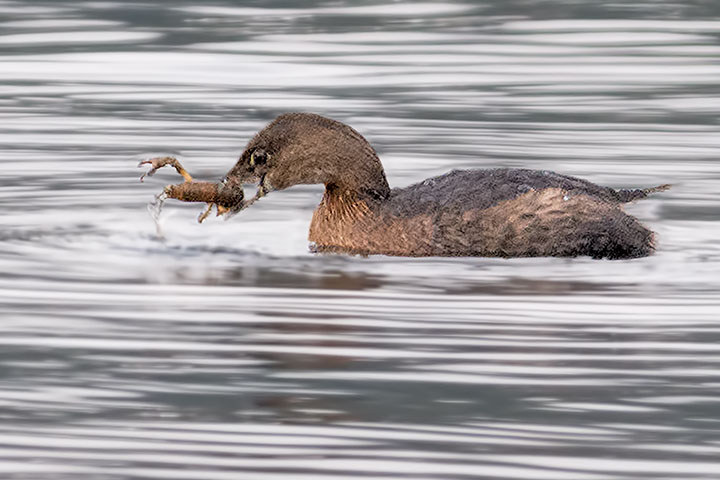
Then with one gulp, the crayfish vanished down the grebe’s gullet.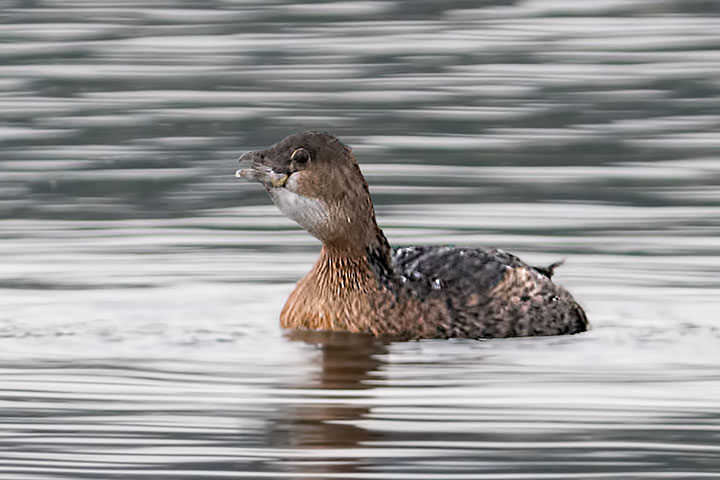

Terrific action sequence, Alistair. I encountered crayfish (don’t know the species) when working on the Kootenay River, near the confluence with the Columbia, at Castlegar a few years ago. Your photographs are really splendid. Thank you, yet again.
Great picture as always, Alistair. There are crayfish in the arm and I assume the main lake, too. You can search for them under the rocks along the shoreline. Mr. Young, the biology teacher at LVR used to bring them to class and told us where to find them. I’ve found them in Queens Bay. Thanks for the memories!